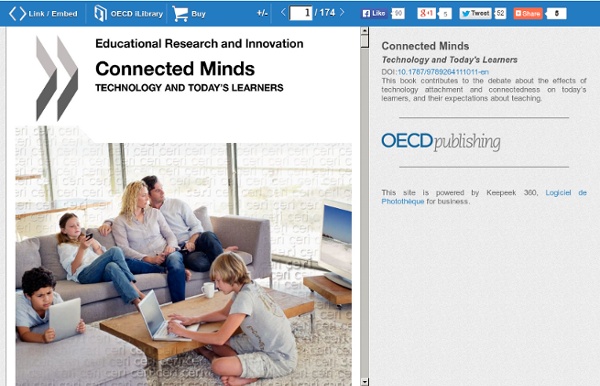



Minería de datos para un aprendizaje (social) más efectivo El análisis, la minería de datos es una de las tendencias de futuro más claras en la web. Y se aplica a muchos ámbitos pero en especial al científico, como muestra la noticia que leía recientemente, con Google y Microsoft apostando por el mapeado de la investigación científica y proporcionando herramientas gratuitas para citación, redes y seguimiento de los ámbitos más recientes de investigación científica. El mismo fenómeno toma fuerza en educación, potenciando lo que podríamos denominar las posibilidades “aumentadas” de aprendizaje en la web o el que desde ya podríamos también llamar Aprendizaje aumentado. Identificábamos en un escenario de cuatro a cinco años para el Horizon Report que elaboramos varios expertos este 2011 y exponía en Expoelearning 2011 como tendencia, la de las analíticas de aprendizaje, capaces de proporcionar retroalimentación para autoregular el proceso de aprender. George Siemens las define así: (incluido su antecesor, WebCT), y Moodle.
Bases para una formación inicial del profesorado desde una perspectiva 2.0 | Educa con TIC Informes internacionales, análisis nacionales y el propio sentido común nos indican que la mejora del sistema educativo debe pasar por un cambio importante de la formación inicial del profesorado. Es una necesidad evidente el paso de una formación centrada en el saber y basada en la lección magistral hacia un proceso más rico y complejo de construcción de la identidad profesional del futuro docente a través de metodologías activas, críticas y situacionales. Para esta transformación la perspectiva 2.0 puede ser una ayuda indispensable y un factor de motivación para el docente en formación.Sin embargo, como ya expusimos en una entrada anterior, hay datos que nos hacen temer no sólo que esta perspectiva 2.0 esté ausente del currículo de formación inicial del profesorado, sino que las tIC tengan un uso muy restringido en las facultades de educación en nuestro país. Esto no se debe a dejadez u olvido por parte del profesorado universitario. Sin embargo, la renovación es necesaria.
Guia para la escritura académica Nuevo conocimiento= buscar fuentes idóneas en el área disciplinar que te interesa Así, el dicho de “pararse en hombros de gigantes”, dentro de la academia, se refiere a la posibilidad de construir un aporte a la disciplina epistémica a la cual quieres pertenecer, desde el conocimiento de lo que ya ha sido realizado por otros. Desde ese lugar en el conocimiento se plantea que los aportes que hagas sean originales, creativos y al mismo tiempo formales. ¿Qué han hecho otros? Para responder a esta primera pregunta es necesario lo siguiente: ¿En dónde reside el valor de lo realizado por otros? Esta pregunta se responde conociendo con detalle la manera en la que se desarrollan los criterios de valor en cuanto al arbitraje, la indización en bases de datos, y el cálculo del factor de impacto de una publicación. Con estos criterios de búsqueda y la revisión de los resultados, es posible seleccionar las fuentes con las que trabajarás en tu escrito.
GUIA DE RECURSOS EDUCATIVOS - EDUCASITES.NET